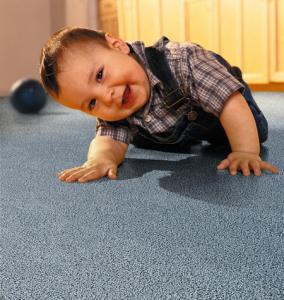
America loves carpets. I’ve babysat children and pets who love to roll around on the carpet, and when they come near me, my nose becomes runny and my eyes water. My indoor allergies are triggered from the dander of the carpet. I can’t do anything about it since carpets cover the floors of our homes, stores, offices, and schools. Hypo-allergenic carpets are somewhat common, but there are people out there who have even worse allergies than I do.
In fact, the Carpet and Rug Institute reports that more than two-thirds of homes in the United States have wall-to-wall carpeting. In my apartment, the wall-to-wall carpeting isn’t too fluffy, so it doesn’t trigger my allergies.
Carpets emit harmful chemicals.
Carpet fabric is made of a variety of chemicals to dye the material and glue the fibers together. Carpets are made of volatile organic compounds (VOCs) such as benzene, toluene, and formaldehyde. These chemicals are listed as possible carcinogens by the EPA. Fire repellants and artificial dyes add to the potion of harmful chemicals lurking between the fibers. Our skin and lungs absorb the chemicals, and this can lead to headaches and dizziness.
They collect allergens.
Stomping my muddy boots on the carpet in the entrance adds dirt to the surface. Carpets accumulate dust, dirt, insects, and toxins from people who simply step on it. Even the gravitational pull of the floor makes carpet heavy with dust. These allergens circulate in the air when the carpet is vacuumed or shaken, which can aggravate allergies. When I vacuum, I definitely sneeze from the upward swirl of dust.
Carpets are generally considered safe and inexpensive in the home, but they can pose health threats, especially to those with indoor allergies. A small rug near the front door or bathtub is fine, but minimizing carpeting will provide a more breathable environment for everyone.

